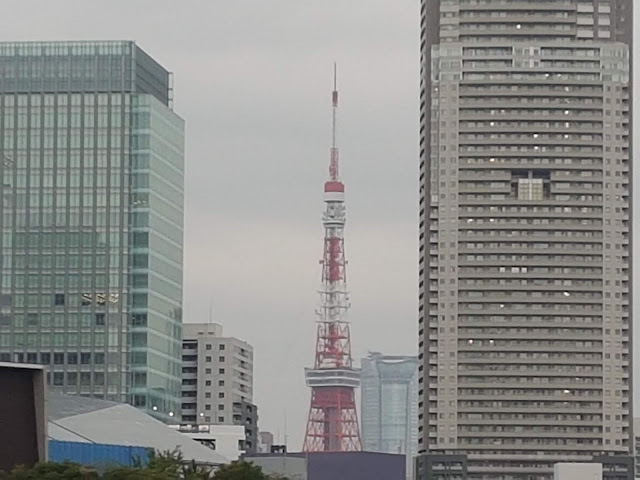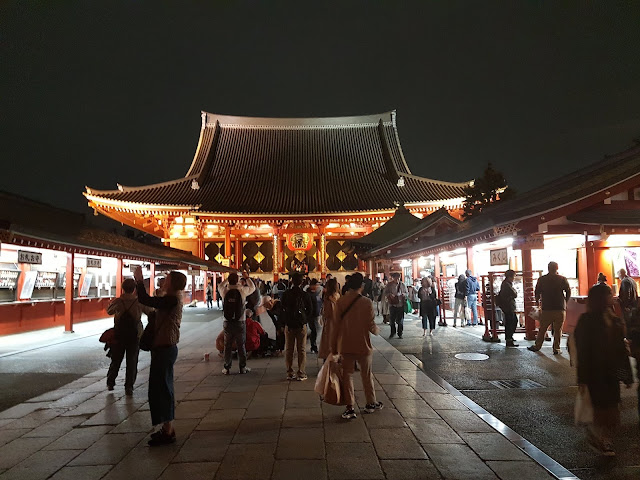As soon as I learnt that the 144 hour transit visa for China existed at nil cost I determined to make Beijing a stopover on our return journey from Japan. It's also why I decided to fly Air China.
I didn't expect China to be easy but didn't quite anticipate the problems that we encountered. The first arose in connection with our accommodation. Two weeks into the Japan visit I received an email from the accommodation that I had booked in Beijing to say that my credit card had been declined and they were cancelling the booking. After contacting the bank they assured me that there was no problem with the card and that the terminal in China was where the difficulty lay. I quickly booked another self catering apartment and organised a taxi to avoid the kind of problem we experienced when we first arrived in Japan.
Two days before we were due to leave for Beijing I received an email from the apartment owner telling me that the immigration authorities would not accept an apartment as being a suitable address for a transit visa. I would have to get a "regular" hotel. So all arrangements in tatters and less than 48 hours before we arrived in Beijing.
I got back onto Booking.com and got into a courtyard hotel in a hutong. That is a traditional alley that runs off a main street. We're quite central in Beijing and these kind of properties are very trendy for cafes, bars and boutique shops. Our hutong however remains very traditional. They can also arrangeAirport collection at half of the cost of the previously arranged taxi. You can see part of our room which was on the first floor with a view over the courtyard and beyond central Beijing.
I didn't expect China to be easy but didn't quite anticipate the problems that we encountered. The first arose in connection with our accommodation. Two weeks into the Japan visit I received an email from the accommodation that I had booked in Beijing to say that my credit card had been declined and they were cancelling the booking. After contacting the bank they assured me that there was no problem with the card and that the terminal in China was where the difficulty lay. I quickly booked another self catering apartment and organised a taxi to avoid the kind of problem we experienced when we first arrived in Japan.
Two days before we were due to leave for Beijing I received an email from the apartment owner telling me that the immigration authorities would not accept an apartment as being a suitable address for a transit visa. I would have to get a "regular" hotel. So all arrangements in tatters and less than 48 hours before we arrived in Beijing.
I got back onto Booking.com and got into a courtyard hotel in a hutong. That is a traditional alley that runs off a main street. We're quite central in Beijing and these kind of properties are very trendy for cafes, bars and boutique shops. Our hutong however remains very traditional. They can also arrangeAirport collection at half of the cost of the previously arranged taxi. You can see part of our room which was on the first floor with a view over the courtyard and beyond central Beijing.
Beijing airport is one of the biggest I have ever encountered. Along with a small group of others we had to go to a small separate desk to fill in our paperwork for the transit visas. By the time this was all completed we were well behind the rest of our plane load. To get from the immigration hall to baggage reclaim and customs you had to go on a five minute train ride. It had taken us over an hour and a half between landing and reaching the arrivals hall and I had serious doubts if our driver would still be there. Thankfully there was a little grinning Chinaman holding up a bit of cardboard with Nigel Duce written on it. He had absolutely no English but he knew where he was going and I knew that we would be in bed before 2am. Despite the late night we didn't get a great night's sleep because of a vibration caused by the air con, so next morning we asked for a move and got upgraded to a larger room on the first floor. The window overlooks the courtyard and central Beijing is visible not far away.
It also immediately became apparent that although the hotel had wifi and we could log on to it, it was absolutely no use to us. It did not support any Western platforms. No Google in any of its guises. No Facebook. No Western news media, including BBC. Big Brother was stopping the other Big Brother looking after our interests.
We went for breakfast which was consistently poor. There was a choice of one from four options, no mix or match. 1, Chinese take on a fried breakfast, two sausages, two bacon slices, two hash browns, two tomatoes, two eggs fried and rolled, two pieces toast and one coffee. Sounds good but not when semi cooked and cold. Option 2 was the same as 1 but half the quantity, 3 was the continental option, pale toast and jam, finally 4 was the Chinese option of rice and rice.
Napoleon said that an army marches on it's stomach so with that in mind we marched out to find the subway to the Forbidden City.
Here's Helen about to enter through the Meridian gate at the south end of the complex opposite Tiananmen square.
The Forbidden City is a palace complex which housed the Ming Dynasty (1368-1644) followed by the Qing Dynasty (1644-1912). It was built 1406-1420 (mind you, it's had a lick o'paint or two since then). Consisting of 980 buildings over 72 hectares. It is a vast site. UNESCO declared it a World Heritage Site in 1987 and lists it as the largest collection of preserved ancient wooden structures in the world. It gets its name because no one (not just "foreigners") was allowed to leave or enter without the permission of the Emperor. You will notice that there are quite a few visitors around in the photos, this is because it gets 16.7 million of them every year. That averages out at 46,000 a day.
The architectural style is Ming and quite frankly, although very impressive, a bit samey.
One or two things from the picture below which is the Gate of Supreme Harmony. There is the Imperial Way which is the line or path which goes south to north, bisecting the city on a longitudinal axis. This is, of course for Emperors only. You can judge the status of a building by the number of little animal figures carved on the ends of the eaves, I think the largest number is 11, but you can have fun counting them in the different pictures!
Vermilion is the Imperial colour so it's everywhere, here in the wooden pillars and doors. Note the brass studs on the doors, 9 rows of 9 studs. That number is very important, but more of that later. Notice also the wonderful ornate wooden carving of the ceilings.
Passing through the doors above we entered another courtyard area. This is the area which leads to Hall of Supreme Harmony. It is in this courtyard that that these two guardsmen facing east and west are doing their guarding. Quite what they are guarding, I have no idea but there is certainly something significant beside them.
Three examples of spiritual art outside the Hall of Supreme Harmony. Firstly the highly appropriate Emperor Crane with head raised, cast in bronze with a wonderful patina. This bird is renowned for its longevity and as such represents the Dynasty's eternal reign. Note the sumptuously carved stone balustrade.
Here is the representation of the Dragon turtle made about the same time as the crane. This is a particularly handy beast to have around as it symbolizes courage, longevity, power, determination fertility, success and support. What more could you want? Well, a brace I suppose.
The third Imperial erection outside the Hall is this sundial. This is to remind everybody that the Emperor was omnipotent and controlled time but was also good and fair so he would share it with everyone.
The southern half of the complex is mainly for ceremonial purposes, meeting delegates, praying, coronations, weddings etc. whilst the northern half is devoted to Imperial living, your palaces and gardens and all the other stuff that all Emperors require. Below is a view of the throne in the Hall of Central Harmony. Note the fine detail on the open door. There are thrones in each of the three Halls of Harmony.
Earlier I referred to the sumptuously carved balustrade. You can see this in a little more detail in the picture below. Every element of the vast balustrade is hand carved and unique. The variations on the themes of dragons and monsters stretches the imagination of the most enthusiastic of Dungeons and Dragons gamesters. Not only that but the whole system also forms an elaborate drainage system partly resembling the gargoyles on medieval European churches.
Here we are looking down towards the Palace of Heavenly Purity and the start of the domestic part of the complex. The gate and wall form the division. If you look carefully you will see four large gilt bowls, one either side of the far steps and close to the start of the undecorated part of the pink wall. They are about 3 metres in diameter, weigh 4 tonnes and hold 4 tonnes of water. They are designed as fire extinguishers. In winter charcoal fires would be lit under them when there was a risk of freezing. These little reservoirs are all over the City. There is a total of 308 of them.
The big stone carving which is on the north side of the Hall of Preserving Harmony and can also be seen on the downside of the ramp in the picture above. The single stone weighs over 250 tonnes, is 16.5 metres long, 3 metres wide and 1.7 metres thick. It is the largest single stone carving in China. The marble originally came from Fanghan some 70 kilometres from Beijing.
There has been much speculation over the years how the stone was transported. The current theory involves a winter road of ice created from water pumped from wells dug beside the road. It was carved in the Ming Dynasty and lies on the Imperial way. Touching it was punishable by death. It portrays dragons playing with pearls above the sea, represented by the waves in the foreground. This kind of bas relief carving was very popular and very fine it is too.
We then made our way East to look at some of the side palaces and the museum shops, which were closing. We left through the East gate having spent nearly four hours in the City. I reckon we saw less than half of the place. It's definitely a meal that requires more than two sittings. Talking of meals we stopped off at a local cafe for a meat and noodle dish for peanuts as it were. Then it's back to the hotel because we have an early start tomorrow morning in preparation for the GREAT WALL WALK.





























